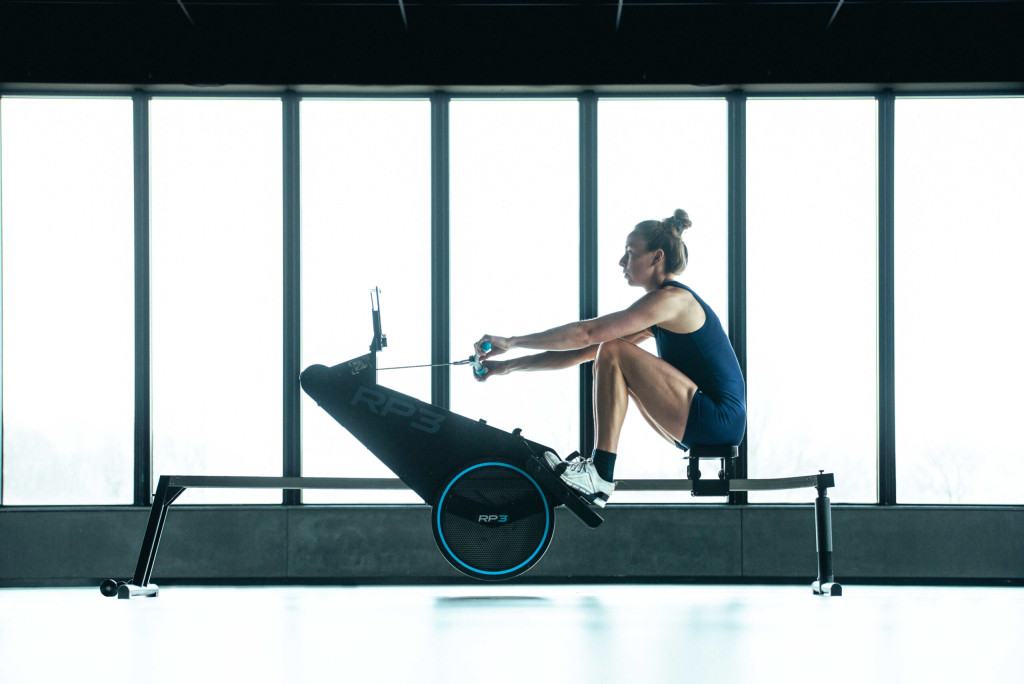Best low-impact cardio options for home
Discover 5 effective low-impact cardio options for home workouts that protect your joints while boosting fitness. Transform your health journey with these sustainable exercises for
Rowing activates approximately 86% of the muscles in your body, making it one of the most comprehensive workouts available. During each stroke, you engage major muscle groups in sequence: first your legs (quadriceps, hamstrings, glutes), then your core (abdominals, lower back), and finally your upper body (shoulders, back, arms). This coordinated chain of movement provides both strength and cardiovascular benefits simultaneously, with the dynamic nature of rowing offering a low-impact yet highly effective full-body workout that few other exercise modalities can match.
The rowing stroke consists of four distinct phases that work together to create a fluid, powerful movement. Each phase activates different muscle groups in a coordinated sequence, making rowing a comprehensive exercise that trains the body to work as a cohesive unit.
The catch is where it all begins. In this position, your shins are vertical, arms extended forward, and your body is leaning slightly forward from the hips. Your hamstrings, calves, and lower back are engaged as you prepare for the drive.
The drive is where the power happens. It starts with pushing through your legs, engaging the quadriceps, hamstrings, and glutes. As your legs straighten, your core muscles stabilize your torso while you pivot backward at the hips. Finally, your arms pull the handle toward your lower ribs, activating your biceps, rhomboids, and lats.
The finish position has your legs extended, torso leaning slightly backward, and the handle pulled in at your lower ribs. Here, your glutes, abdominals, and biceps are all working to maintain this position.
The recovery phase reverses the sequence. Your arms extend first, followed by pivoting forward at the hips, and finally bending the knees to return to the catch position. This phase engages your triceps, shoulders, core, and hamstrings as you control the return.
Rowing engages an impressive array of muscles throughout your body, working them in a coordinated sequence that builds both strength and endurance. Understanding which muscles are activated helps you appreciate the comprehensive nature of this exercise.
Your legs contribute about 60% of the power in rowing. Each stroke heavily engages your quadriceps (front thighs), hamstrings (back of thighs), and glutes (buttocks). The calf muscles also work to stabilize your feet during the drive phase.
The core provides roughly 20% of rowing power and serves as the critical link between upper and lower body. Your abdominals, obliques, and lower back muscles work constantly to maintain proper posture and transfer force between legs and arms. Unlike many exercises, rowing engages both the front and back of your core simultaneously.
Your upper body contributes the remaining 20% of power. The latissimus dorsi (large back muscles), rhomboids (between shoulder blades), trapezius (upper back and neck), erector spinae (along spine), deltoids (shoulders), biceps, and forearm muscles all work together during the rowing stroke. Even your chest muscles engage as stabilizers throughout the movement.
What makes rowing unique is how these muscle groups work in sequence rather than isolation, training your body to function as an integrated unit while building balanced strength.
Yes, rowing genuinely qualifies as a full-body workout. It engages approximately 86% of your muscles during each stroke, a figure that surpasses most other forms of exercise. This comprehensive muscle activation occurs through a coordinated chain of movement rather than isolating individual muscle groups.
A true full-body workout should engage all major muscle groups: legs, core, back, shoulders, and arms. Rowing ticks all these boxes, working both the anterior (front) and posterior (back) chains. This balanced approach helps prevent the muscular imbalances that can develop from exercises that favor one side of the body over the other.
When compared to other popular workouts, rowing stands out for its completeness:
The rowing stroke’s fluid, sequential nature trains your body to work as an integrated unit rather than as separate parts. This functional movement pattern has practical benefits that transfer to daily activities and other sports.
Rowing outperforms most traditional cardio exercises when it comes to comprehensive muscle engagement. While running, cycling, and elliptical training all offer excellent cardiovascular benefits, they simply don’t activate as many muscle groups as effectively as rowing does.
Running primarily engages the lower body—quadriceps, hamstrings, calves, and glutes—with some core stabilization. Upper body involvement is minimal and mainly limited to momentum and balance. It offers excellent cardio benefits but misses most of the upper body in terms of strength development.
Cycling heavily targets the quadriceps, hamstrings, and calves, with some glute activation depending on position. The core engages somewhat for stabilization, but the upper body remains largely passive. While excellent for leg endurance, cycling leaves the upper body relatively untrained.
Elliptical training offers a bit more upper body engagement than running or cycling if using the arm handles, but the resistance and range of motion are limited. The movement pattern is also fixed, which can limit functional strength development.
What makes rowing unique is its combination of resistance training and cardiovascular conditioning in one fluid movement. Each stroke requires a coordinated effort from legs, core, and upper body, working through a full range of motion against adjustable resistance. This leads to improved muscular endurance, cardiovascular fitness, and functional strength simultaneously—a rare combination in a single exercise.
Yes, you can build muscle with rowing alone, but with some important qualifications. Rowing provides sufficient resistance to develop muscular endurance and moderate strength gains, particularly for beginners and those returning to exercise after a break.
Rowing is especially effective at developing lean muscle mass throughout the body. The resistance provided by the rowing machine challenges your muscles enough to stimulate growth while the high-rep nature of the exercise helps sculpt defined, functional muscle rather than bulk.
The muscles that respond best to rowing include:
For those seeking significant muscle size increases, rowing works best as part of a broader training programme that includes progressive resistance training. The principle of progressive overload (gradually increasing the demands on your muscles) applies to rowing just as it does to weight training—you’ll need to gradually increase intensity to continue seeing results.
That said, many find the balanced, functional strength developed through rowing to be ideal for everyday fitness and athletic performance, even if it doesn’t produce the same hypertrophy as dedicated bodybuilding routines.
Maximizing muscle activation during rowing comes down to proper technique, appropriate resistance, and workout variety. With attention to these factors, you can ensure your rowing sessions deliver the best possible results for strength and endurance development.
Perfect your form first and foremost. Focus on the proper sequence: legs, back, arms on the drive; arms, back, legs on the recovery. Maintain good posture throughout, with a straight back and engaged core. Poor technique not only reduces muscle engagement but also increases injury risk.
Adjust resistance appropriately for your goals. Higher resistance settings increase muscle activation, particularly in the legs and back, making them better for strength development. Lower resistance with higher stroke rates emphasizes cardiovascular conditioning while still engaging muscles for endurance.
Incorporate variety in your rowing workouts:
Pay attention to your power curve on the monitor. A smooth, even curve typically indicates optimal muscle engagement throughout the stroke, while an inconsistent curve may suggest certain muscle groups aren’t contributing fully to the movement.
Dynamic rowing machines offer a fundamentally different experience compared to traditional static ergs, resulting in more authentic muscle engagement patterns and reduced injury risk. The key difference lies in how the machine moves with you rather than anchoring your body in place.
On a dynamic rowing machine, both the footplate and the seat move during the stroke. This creates a more realistic simulation of on-water rowing, where your body mass stays relatively stationary while the boat moves beneath you. This design distributes forces more naturally throughout your body.
The benefits for muscle activation include:
The dynamic movement also encourages proper sequencing of muscle activation, helping you develop the correct motor patterns for efficient rowing. This not only enhances performance but also reduces compensation patterns that can lead to overuse injuries.
At RP3 Rowing, we’ve designed our dynamic rowing machines specifically to reproduce the authentic feel of on-water rowing. Our Model T and Model S machines provide the realistic resistance and movement patterns that train your muscles in the most biomechanically sound way possible, making them ideal for both serious athletes and home fitness enthusiasts looking for the best indoor rowing experience. Understanding the science of rowing has been fundamental to developing equipment that maximizes both performance and safety.
If you’re interested in learning more about the benefits of rowing, reach out to our team of experts today.
Discover 5 effective low-impact cardio options for home workouts that protect your joints while boosting fitness. Transform your health journey with these sustainable exercises for
Discover 5 effective low-impact exercises that protect your back while maintaining fitness intensity. Learn proper form techniques to strengthen your spine without risking injury.
Discover 5 effective home workouts that build strength without stressing your joints. Learn fluid movement techniques for pain-free exercise that delivers results while protecting your
Discover effective low-impact fitness strategies that build strength and cardio health without damaging your joints. Learn sustainable workout techniques for long-term health and injury prevention.
Discover 5 effective full-body low-impact workouts perfect for beginners that protect your joints while building strength and fitness. Start your sustainable exercise journey today!
Discover how low-impact fitness creates sustainable health benefits without joint pain. Learn 5 full-body workouts that deliver results while preserving your body for decades of
Discover why low-impact workouts deliver powerful fitness results without joint damage. Learn 6 key benefits and find the perfect exercise for sustainable daily fitness that
Discover why low-impact training on recovery days accelerates muscle repair, prevents injuries, and boosts long-term fitness gains. Learn optimal activities and avoid common recovery mistakes.
Discover why rowing machines deliver a complete workout while protecting your joints. Engage 85% of your muscles with zero impact stress—perfect for fitness enthusiasts of
Discover effective low-impact exercises perfect for returning to fitness after breaks or injuries. Learn 5 joint-friendly workouts that rebuild strength while preventing setbacks on your
Discover 5 low-impact routines that challenge your entire body without stressing your joints. Build strength and burn calories while protecting your knees, hips, and spine.
Discover how rowing uniquely engages 85% of your muscles while enhancing flexibility in one efficient workout. Build strength and mobility simultaneously without stressing your joints.
Discover how consistent low-impact activity delivers powerful physical and mental benefits without joint stress. Build fitness, reduce stress, and improve mobility through sustainable daily movement
Discover why rowing machines offer the ultimate low-impact, full-body workout for home fitness. Get 85% muscle engagement with minimal joint stress—perfect for all ages and
Discover how low-impact exercise protects your joints while delivering powerful fitness results. Learn 5 joint-friendly workouts that maintain mobility and prevent pain as you age.
Discover how to build sustainable low-impact fitness habits that protect your joints while delivering exceptional results. Learn proven strategies for lifelong exercise consistency without pain.

We will send you a personal quote as soon as possible.
As soon as the quote is ready, you will receive a link by email to order directly.
